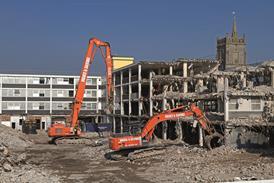A report on London's housing needs, presented to London mayor Ken Livingstone by the Greater London Authority-appointed Housing Commission, backs Livingstone's desire to see affordable housing make up at least half of all new development in the capital.
The report, Homes For a World City, recommends a target of 28 000 affordable homes a year. Of these, the commission wants 35% to consist of social rented homes for people on a low income and 15% to be houses in an "intermediate" bracket for people on a moderate income.
Livingstone told Building: "There are two years before this will get enforced and we are flagging it up now so industry will be able to adjust and plan how to include the 50%. I would encourage higher densities to provide the space. Not everyone wants a garden."
Livingstone and Chris Holmes, the Housing Commission chair and chief executive of housing pressure group Shelter, said that housebuilders would not be expected to pay all the costs of providing more social housing as public money would be made available.
But housebuilders said the commission did not have a proper grasp of the scheme's economic needs.
Andrew Fryer, managing director of Laing Homes North London, said: "The industry recognises the need for more affordable homes but I do not believe that the money is there to fund them. This is not going to solve the problem and in the long run it could make it worse. If customers do not like these proposals and sites become commercially unviable then we will not invest in them."
He added that further discussions would have to take place to make the GLA aware of what he claimed was the economic unviability of the proposals.
Stephen Brazier, managing director Taywood Homes, expressed concerns about the lack of public funding. He said: "There is a huge lack of the type of public investment that is needed. Unless we can generate returns we are not going to build in an area and people will not be attracted to it. A more reasonable stance may encourage more supply."
He said: "The commission cited St George's Imperial Wharf, which has nearly 50% social housing. They said, if it can happen there it can happen anywhere. But that site has a river frontage, which attracted private buyers."






















